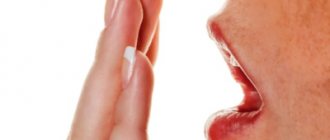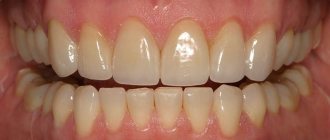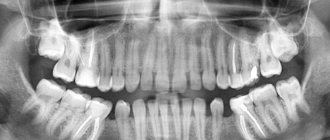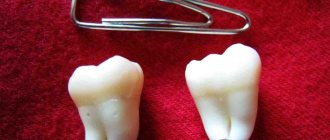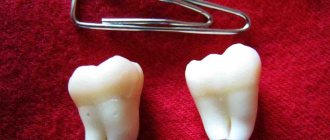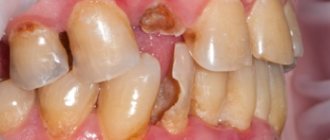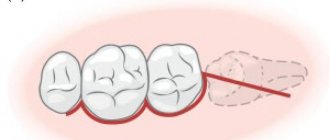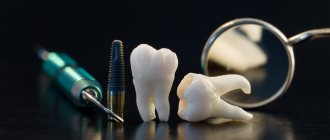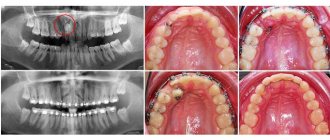8973
A crown is a single permanent prosthesis that acts as a kind of cap on a damaged tooth, and can serve its owner for 15 years, subject to the installation regulations and rules of care during use.
However, if an unpleasant odor or painful sensations appear, it becomes necessary to dismantle the structure.
Removing a crown from a tooth is an unpleasant procedure, but in some cases it is the only way to eliminate the problem.
Indications
Prosthetics with crowns is a labor-intensive and time-consuming procedure, sometimes accompanied by pain and discomfort.
To remove the structure, the specialist must have compelling reasons, otherwise he will do everything possible to avoid extreme measures.
A fixed orthopedic device is subject to disposal in the following cases:
- Incorrect installation of the product .
The crown may lose stability due to mistakes made by the doctor during its installation, the use of low-quality dental cement, or the destruction of the filling connecting material at the junction points. It is easy to recognize such a problem, since the dental unit begins to loosen and cause discomfort during eating and conversation. - Formation of a cyst on a tooth under a denture . This pathology rarely occurs as a result of various provocateurs. After removing the structure, the specialist removes the abnormal cavity and carries out full treatment.
- Destruction of an adjacent tooth . Another indication for re-prosthetics. In such a situation, the doctor advises installing a bridge instead of two adjacent prostheses.
- Bad odor and toothache. In this case, there is an urgent need for treatment hidden under the structure of the teeth.
Signs of the inflammatory process can develop against the background of the action of infectious agents, progression of pulpitis or secondary caries. In less severe situations, the doctor does not remove the prosthesis, but drills a small hole in it through which he carries out therapeutic treatment.After all the necessary manipulations have been carried out, the hole is filled with cement. Such work significantly reduces the service life of the structure.
- Inflammatory processes in the periodental tissues and gum disease .
Disease processes in periodontal tissues can develop due to various factors - inflammation, trauma, poor-quality manufacturing and fixation of the product. The structure puts strong pressure on the free gum, rubs, and a serious pathology begins to develop that cannot be treated independently. The product must be removed with subsequent treatment of soft structures. - Repeated prosthetics at the request of the patient . The patient can independently decide to replace the device with a more expensive and high-quality product.
- Broken prosthesis . The appearance of cracks and chips on the surface of the crown is also a reason for its dismantling.
Features of the production of Noritake metal-ceramic crowns, their advantages and disadvantages.
Come here if you are interested in the characteristics of Duceram metal-ceramic crowns.
At this address https://www.vash-dentist.ru/protezirovanie/nesemnyie-p/koronki-np/metallokeramicheskih-vita.html there is a detailed description of the Vita crown.
When to remove a crown from a tooth
A crown is removed from a tooth only in cases where it is no longer possible to do without it and there is a serious reason for its removal.
Of the many reasons prompting a crown removal procedure, the most common complaint is toothache under the crown.
Under normal conditions, depending on the material from which it is made, its service life is 8-10 years.
Strong arguments for its removal may include:
- The beginning of the development of dental disease under the crown (secondary caries, cysts, periodontitis and others)
- Errors made by a specialist during prosthetics (careless fitting and installation of the product, poor-quality material, non-compliance with the anatomical features of the structure of the dentofacial system), which create problems for the patient and require immediate correction
- The patient’s desire to replace a previously installed crown with a better and more aesthetic one (metal, metal-plastic with metal-ceramic or ceramic)
- Serious structural damage or failure associated with patient injury
- The dental cement on which the crown was fixed collapsed and it became mobile
- The service life of the structure has expired
If caries begins to develop under the crown, this is also a reason to remove it.
If a tooth covered with a crown begins to hurt, there is an unpleasant odor from the mouth, or the crown becomes unsteady, then you should immediately consult a dentist.
The decision to remove the crown is made by the dentist after examining the x-ray of the tooth.
After taking an x-ray and examining the oral cavity, the doctor decides to remove the structure and, if necessary, replace it, having previously carried out the necessary treatment of the diseased tooth.
A large number of clinical studies have shown that in 40% of cases the need to remove a crown in the first years after its installation arises from poorly performed manipulations before prosthetics: sanitation of the oral cavity and endodontic treatment.
The reasons mentioned above are a reason to remove the installed crown. But this needs to be done in the dentist’s office, who will also be able to explain how he will do this, which method and why should be chosen in a particular clinical case.
Techniques
In dental practice, various methods of removing crowns are used. The choice depends on the existing clinical picture and the target direction of dismantling.
The decision on the method used is made by the patient, taking into account his financial capabilities and the time he can devote to it. Let's consider the existing options in detail.
Kopp apparatus
A crown remover is a dental instrument that greatly simplifies the work of a specialist and gives him the opportunity to painlessly remove the prosthesis without resorting to its destruction.
The device looks like a special hook , the operation of which is started by a button located on the holder. The procedure begins with breaking the cement under the structure using a drill. Next, using special forceps and hooks, the crown is picked up and picked out.
The method is considered a low-traumatic and painless procedure. However, it has one significant drawback - in some cases the device leaves scratches on the ceramic coating of the product , as a result it will require restoration.
Coronaflex device
The device operates on the basis of compressed air , which destroys cement. At the beginning of the procedure, the device should be operated with minimal impact force to avoid damage to the tooth.
The crown in the chewing area is removed using forceps. The device is installed so that its body is under the arc of the forceps.
special brackets as auxiliary tools , which are fixed on the crown using an adhesive system. Then the procedure continues according to the principle of the previous method with forceps.
When using the Coronaflex device, there is practically no risk of damage to a fixed prosthesis , but the price of the instrumentation is quite high, which affects the cost of removing the structure.
For this reason, the use of the device is justified in a situation when it becomes necessary to dismantle an expensive crown, for example, made of zirconium dioxide.
What are porcelain dental crowns and how practical are they?
In this publication you will find detailed information about steel crowns.
Here https://www.vash-dentist.ru/protezirovanie/nesemnyie-p/koronki-np/bolit-zub-pod-chto-delat.html we will answer the question: why does the tooth under the crown hurt when pressed.
Sawing
After using this method, repeated prosthetics with the same design is impossible.
Many patients mistakenly believe the procedure is painful, but in fact their fear is in no way justified. During sawing, the patient does not even experience any discomfort.
As a rule, this method is used in the case of inexpensive products that are subject to liquidation. Usually we are talking about metal ceramics.
However, specialists often resort to cutting to remove ceramic crowns, which requires the use of a diamond bur and special tools .
Ultrasound
Under the influence of a sound wave, cement loses its stability. But this method is not applicable to every material.
If we are talking about glass ionomer cement (a material based on polyacrylic acid and aluminofluorosilicate glass powder), its use is devoid of expediency and practical benefit.
Thanks to this method, the doctor can preserve the model and its shape without damage.
The video shows the process of removing the crown.
Stages of crown removal
Removing crowns consists of several stages:
- Preparatory . Examination and assessment of the patient's condition. It is possible, if necessary according to indications, to use painkillers.
- Absentee . Elimination occurs gradually, and the process depends on the chosen method. The most popular and used method is using a Kopp hardware device. For the budget version of the installed structure, sawing is used. Expensive crowns are removed using ultrasound.
- Evaluative . The stage consists of diagnosing the integrity of the prosthesis and the root system of the teeth. This is done in order to understand whether the detached structure can be reused. The place for re-installation is subject to special treatment and treatment. The specialist’s qualifications and experience in removing and reinstalling dentures in the oral cavity are important. If complications occur as a result of detachment, the specialist assesses the patient’s condition and takes action. A temporary plastic structure is installed on the damaged area. In this case, the cost of the procedure increases significantly.
- Installation . After cutting, a new prosthesis is manufactured and subsequently installed.
- Rehabilitation . After the procedure, you should follow the instructions of the orthodontist to avoid consequences and complications. At first, you need to adhere to an appropriate diet with gentle foods.
To learn more about how to remove a crown from a tooth, watch the video.
About pain and self-liquidation
The level of complexity and pain of each of the listed methods depends on the experience and professionalism of the doctor.
If the removal of the structure involves the destruction of the cement base, the crown easily falls out, such manipulation is easy and painless.
If a fixed prosthesis is installed firmly and stably, and dismantling requires maintaining the integrity of the product, the duration of the procedure increases, which causes discomfort in the patient. In such cases, the use of anesthesia is appropriate .
If there is severe pain under the structure, a person looks for forced ways to eliminate the product at home. Lack of experience and special equipment are considered to be the cause of adverse consequences.
Any attempts to independently remove the prosthesis lead to its damage or injury to the soft tissues of the oral cavity.
For this reason, such manipulations are carried out in a clinical setting. A qualified doctor with special equipment will perform correct crown removal.
You can remove the orthopedic device yourself in two cases:
- the product has become loose or has come off together with the cement base;
- the structure fell apart and it became necessary to extract the remaining fragments.
To avoid further complications, a person should seek help from a specialist as soon as possible.
Is it possible to remove a crown at home?
When you try to remove a crown yourself, there is always a danger of damaging the crown, soft tissues, destroying the tooth under the structure, and infecting the oral cavity
Even if someone is interested in the question: is it possible to remove the crown yourself, at home, then the only answer here is - it is impossible under any circumstances. Unless the structure completely disappears on its own. This happens in advanced cases (when the patient does not see a doctor on time and the problem gradually worsens), due to the destruction of a supporting tooth or injury.
Even if the crown is too mobile, it should only be removed by a doctor in a dental office using special equipment. Otherwise, there may be unpleasant consequences: there is always a danger of damaging the crown, soft tissues, destroying the tooth under the structure, and infecting the oral cavity.
But if the crown is already broken, split and easily removed, then there is a danger due to its presence in the mouth. In this case, it and the broken fragments must be carefully removed. Although, even in this situation, it is wiser to urgently go to see a doctor.
Price
The complexity of the process and its cost will largely depend on the material of the permanent structure and the type of device with which it will be removed.
Let's look at the average cost of techniques using the table as an example.
| Technique | Price in rubles for one prosthesis |
| Kopp apparatus | 1 000 |
| Coronaflex device | 1 500—1 800 |
| Sawing | 800 |
| Ultrasound | 900 |
Most dental clinics include in the cost of dismantling fixed structures the price for further treatment and re-prosthetics.
Following actions
After removal of the orthopedic product, the patient may experience discomfort and pain.
To identify the cause of pain, a specialist examines the condition of the tooth. In some cases, radiography is performed for an accurate diagnosis.
The doctor’s algorithm for further actions will depend on the situation as a result of which the crown had to be removed:
- Treatment of the inflammatory process. In the presence of diseases such as pulpitis, caries and periodontitis, the root canals of the tooth are unfilled.
Next, the doctor’s task is to prevent the pathological process in tissues using anti-inflammatory therapy. At the last stage of treatment, a filling is installed. - Restoration. To prevent subsequent destruction of the crown if it is damaged or chipped, restoration measures are required.
- Replacement of cement when it is destroyed . Here it is important to quickly treat the stump with antiseptic agents and re-fix the prosthesis using new dental cement.
- Replacement of the structure at the request of the patient or if it is impossible to reuse it .
Using an x-ray, the doctor evaluates the quality of filling the dental canals, as well as the condition of the periodontal structures. After this, you can select and order a new design.
The therapeutic course of treatment includes the following procedures:
- to fight infection and eliminate inflammation, the patient is prescribed medications from the group of antibiotics;
- Rinsing the mouth with decoctions of medicinal herbs and Furacilin solution is effective;
- To reduce pain, dentists recommend using anti-inflammatory compresses with an analgesic effect.
A paste made from 1 tablet of Nurofen and a few drops of boiled water has worked well here. It is rubbed into the wound area.
In rare cases, the tissue under the crown becomes permanently damaged and cannot be saved. Under such circumstances, the doctor warns the patient about the extraction of the tooth from the alveolus and the impossibility of re-fixing the crown.
As an alternative, you can choose another prosthetic option or resort to implantation.
Indications for the tooth root removal procedure
Attention! If the dental crown is destroyed, it is not necessary to resort to radical measures.
Sometimes treatment followed by the installation of a pin or an individually created stump inlay that exactly follows the shape of the dental canals will be sufficient.
If the root is destroyed and is in poor condition, it must be removed immediately, since there is a high risk of inflammation spreading to other tissues of the oral cavity.
The only condition for preserving the root is the absence of infections and the good condition of the surrounding tissues. Most often, an unhealthy element is extracted in advanced situations. Indications for surgery are the following pathologies:
- severe caries damage, the presence of periodontitis around the root, cysts or granulomas,
- inflammatory processes of the tooth or surrounding tissues,
- if there is only one root left, then there is complete destruction of the coronal part and the inability to strengthen the root system to fix a crown or other prosthesis,
- preparation for implantation or prosthetics,
- mechanical damage (cracks in the root region, root fracture).
Important! During pregnancy, the tooth root is removed only in cases where the inflammatory process poses a threat to the mother or child.
For example, when an infection that develops at the root can seriously harm a woman’s health or cause a miscarriage. Pronounced long-term pain syndrome is also an indication for surgery.
In other cases, it is better to postpone the procedure until the postpartum period.
In these situations, the root of the diseased tooth is clearly subject to removal (extraction). It is a breeding ground for infection and can provoke the development of serious complications. These include: purulent inflammation (abscesses), inflammatory processes of bone tissue (periostitis, osteomyelitis), cysts and even blood poisoning.
We invite you to familiarize yourself with the Secrets of choosing toothpaste for periodontal disease - rating of the best products
Such complications are rare. The likelihood of their occurrence increases with the initial presence of pathological processes in the oral cavity.
Reviews
Dental prosthetics is not the cheapest service provided by dental clinics. Therefore, before the procedure, it would be useful to approach the search for an experienced doctor with special care.
This will help avoid unforeseen situations when, due to mistakes made during installation, re-prosthetics cannot be avoided.
If after reading the article you would like to share your own opinion on this topic, leave your comment below.
If you find an error, please select a piece of text and press Ctrl+Enter.
Tags: dental crowns, fixed dentures, removal of a crown from a tooth
Did you like the article? stay tuned
Previous article
The essence of using individual zirconium abutments
Next article
The use of an angular abutment to achieve high aesthetic prosthetics
